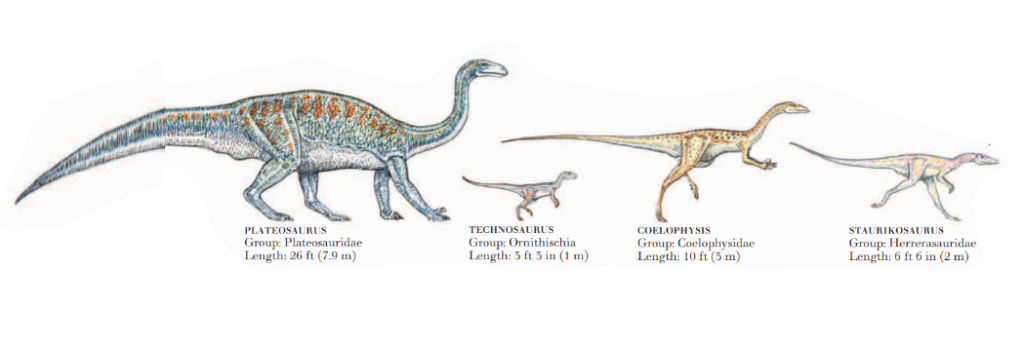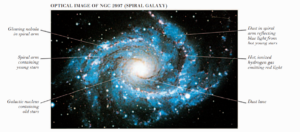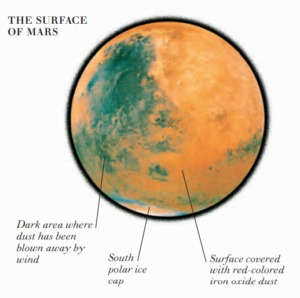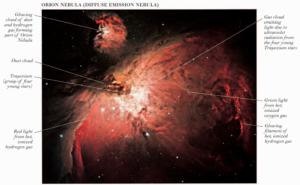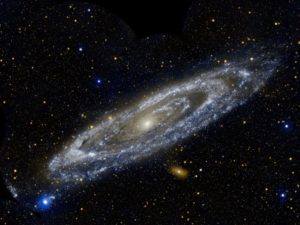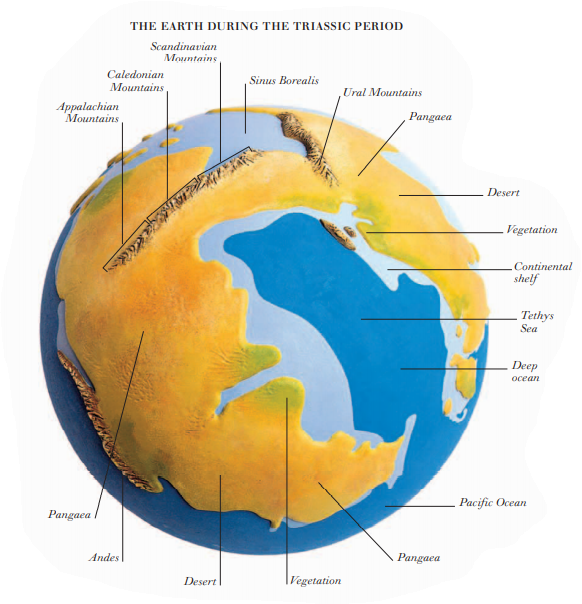
THE TRIASSIC PERIOD (250–200 million years ago) marked the beginning of what is known as the Age of the Dinosaurs (the Mesozoic era). During this period, the present-day continents were massed together, forming one huge continent known as Pangaea. This landmass experienced extremes of climate, with lush green areas around the coast or by lakes and rivers, and arid deserts in the interior. The only forms of plant life were nonflowering plants, such as conifers, ferns, cycads, and ginkgos; flowering plants had not yet evolved. The principal forms of animal life included diverse, often gigantic, amphibians, rhynchosaurs (“beaked lizards”), and primitive crocodilians. Dinosaurs first appeared about 230 million years ago, at the beginning of the Late Triassic period. Among the earliest dinosaurs were the carnivorous (flesh-eating) herrerasaurids, such as Herrerasaurus and Staurikosaurus. Early herbivorous (plant-eating) dinosaurs first appeared in Late Triassic times and included Plateosaurus and Technosaurus. By the end of the Triassic period, dinosaurs dominated Pangaea, possibly contributing to the extinction of many other reptiles.


